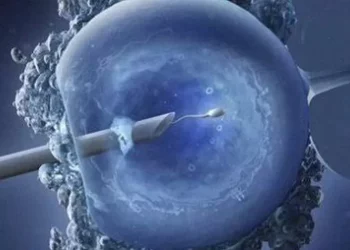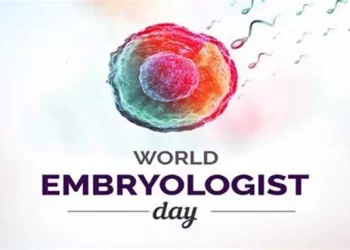Azoospermia is a condition characterized by the complete absence of sperm in the ejaculate. It affects approximately 1% of the male population and is responsible for 10-15% of cases of male infertility. Understanding the causes of azoospermia is essential for effective diagnosis and treatment. This article aims to provide a comprehensive overview of the causes of azoospermia in clear and simple language.
Types of Azoospermia
Azoospermia can be classified into two main types: obstructive and non-obstructive.
Obstructive Azoospermia
Obstructive azoospermia occurs when there is a blockage in the male reproductive tract that prevents sperm from being ejaculated. The production of sperm is typically normal, but the sperm cannot reach the ejaculate.
Non-Obstructive Azoospermia
Non-obstructive azoospermia is due to problems with sperm production. The testes do not produce enough sperm to be present in the ejaculate.
Causes of Obstructive Azoospermia
Congenital Blockages
Some men are born with blockages in their reproductive tracts. These congenital blockages can occur at various points along the tract.
Congenital Bilateral Absence of the Vas Deferens (CBAVD)
CBAVD is a condition where the vas deferens, the tubes that carry sperm from the testes to the urethra, are absent. This condition is often associated with cystic fibrosis.
Epididymal Blockages
The epididymis is a coiled tube where sperm mature and are stored. Blockages in the epididymis can prevent sperm from reaching the vas deferens.
Acquired Blockages
Blockages can also occur due to infections, surgeries, or injuries.
Infections
Infections of the reproductive tract, such as epididymitis or urethritis, can cause scarring and blockages.
Surgical Procedures
Surgeries such as vasectomies, hernia repairs, or surgeries involving the pelvic area can lead to blockages.
Trauma
Injury to the reproductive organs can cause damage and blockages in the reproductive tract.
Causes of Non-Obstructive Azoospermia
Genetic Causes
Several genetic factors can affect sperm production.
Klinefelter Syndrome
Klinefelter syndrome is a condition where a male has an extra X chromosome (XXY instead of XY). This syndrome often results in reduced testosterone levels and impaired sperm production.
Y Chromosome Microdeletions
Certain deletions on the Y chromosome can affect genes responsible for sperm production, leading to azoospermia.
Other Genetic Disorders
Other genetic conditions, such as Kallmann syndrome or Prader-Willi syndrome, can also impact sperm production.
Hormonal Imbalances
Hormones play a crucial role in regulating sperm production. Imbalances can disrupt this process.
Hypogonadotropic Hypogonadism
This condition occurs when the pituitary gland does not produce enough gonadotropins, hormones that stimulate the testes to produce sperm.
Hyperprolactinemia
Elevated levels of prolactin, a hormone produced by the pituitary gland, can interfere with the production of other hormones essential for sperm production.
Testicular Causes
Problems within the testes themselves can lead to non-obstructive azoospermia.
Varicocele
A varicocele is an enlargement of the veins within the scrotum, which can affect sperm production by increasing the temperature of the testes.
Cryptorchidism
Cryptorchidism, or undescended testicles, can lead to impaired sperm production if not corrected early in life.
Testicular Atrophy
Testicular atrophy is the shrinking of the testes, which can result from various causes, including mumps orchitis, trauma, or exposure to toxins.
Testicular Cancer and Treatment
Testicular cancer and its treatment, such as chemotherapy or radiation therapy, can significantly impact sperm production.
Environmental and Lifestyle Factors
Certain environmental and lifestyle factors can affect sperm production.
Exposure to Toxins
Exposure to toxins such as pesticides, heavy metals, and radiation can damage the testes and impair sperm production.
Substance Abuse
Use of substances such as alcohol, tobacco, and recreational drugs can negatively impact sperm production.
Medications
Certain medications, including chemotherapy drugs, anabolic steroids, and medications for high blood pressure or depression, can affect sperm production.
Heat Exposure
Frequent exposure to high temperatures, such as in hot tubs or saunas, can impair sperm production by raising the temperature of the testes.
See Also: What Is Oligospermia and Its Treatment Options
Diagnosis of Azoospermia
Diagnosing azoospermia involves several steps to determine its type and underlying cause.
Medical History and Physical Examination
A thorough medical history and physical examination are essential. The doctor will inquire about past illnesses, surgeries, medications, and lifestyle factors. A physical examination can reveal signs of hormonal imbalances, varicoceles, or other abnormalities.
Semen Analysis
A semen analysis is the first step in diagnosing azoospermia. This test involves examining a sample of ejaculate under a microscope to confirm the absence of sperm.
Hormone Testing
Hormone tests can help determine if hormonal imbalances are contributing to azoospermia. Key hormones tested include follicle-stimulating hormone (FSH), luteinizing hormone (LH), testosterone, and prolactin.
Genetic Testing
Genetic testing may be performed to identify chromosomal abnormalities or gene mutations that could be causing azoospermia. Tests for Klinefelter syndrome, Y chromosome microdeletions, and cystic fibrosis gene mutations are common.
Imaging Studies
Imaging studies, such as scrotal ultrasound or magnetic resonance imaging (MRI), can help identify structural abnormalities, such as blockages or varicoceles.
Testicular Biopsy
In some cases, a testicular biopsy may be performed to determine if sperm are being produced within the testes. This involves taking a small tissue sample from the testes for examination under a microscope.
Treatment of Azoospermia
Treatment for azoospermia depends on its underlying cause.
Treatment of Obstructive Azoospermia
Surgical Correction
Surgery can sometimes correct blockages in the reproductive tract. For example, vasovasostomy or vasoepididymostomy can restore the connection between the vas deferens and the epididymis.
Assisted Reproductive Technologies (ART)
In cases where surgery is not possible or unsuccessful, assisted reproductive technologies, such as in vitro fertilization (IVF) with intracytoplasmic sperm injection (ICSI), can be used. Sperm may be retrieved directly from the testes or epididymis for use in ART.
Treatment of Non-Obstructive Azoospermia
Hormone Therapy
If hormonal imbalances are the cause, hormone therapy may be prescribed. For example, gonadotropin therapy can stimulate sperm production in men with hypogonadotropic hypogonadism.
Surgical Sperm Retrieval
In some cases, sperm can be retrieved directly from the testes using procedures such as testicular sperm extraction (TESE) or microdissection TESE (micro-TESE). These sperm can then be used in ART.
Lifestyle Changes
Lifestyle changes, such as reducing exposure to toxins, avoiding hot baths, and quitting smoking, can sometimes improve sperm production.
Treatment of Underlying Conditions
Treating underlying conditions, such as varicoceles or infections, can also improve sperm production.
Conclusion
Azoospermia is a complex condition with many potential causes, ranging from genetic factors and hormonal imbalances to blockages and environmental influences. Understanding the underlying cause is essential for effective treatment. With advances in medical technology and assisted reproductive techniques, many men with azoospermia can still achieve biological fatherhood. Ongoing research continues to improve our understanding and treatment of this condition, offering hope to many affected individuals and couples.
Related Links:



























